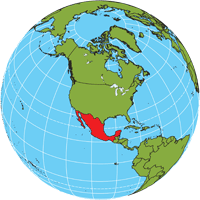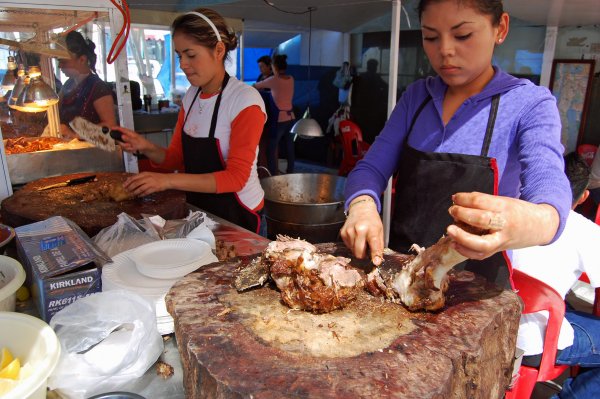Food and Drink: National Cuisine
Mexican cuisine has a long history, stretching back to the country’s ancient cultures. Native ingredients were used in a wide variety of ways, among them avocado, corn, cacao, beans, chilies, papaya, and tomato. These ingredients remain essential to today’s Mexican cuisine. As with other large countries, Mexico has regional recipes that feature local ingredients. For example, the Yucatán Peninsula’s cuisine uses tropical fruits throughout, and the western region prefers stewed goat or sheep in the dish birria. Additionally, those living along the country’s extensive coastline have access to a wealth of fresh seafood.
King Corn
To truly understand what constitutes Mexican cuisine, however, no ingredient is more important to the culture than corn. Domesticated in central Mexico about 10,000 years ago, corn—also known as maize—was processed into a nutritious and versatile dough called masa. Without masa, there would be no tortillas at every meal, some wrapped around fillings to become enchiladas, both of which are traditional foods. Tamales, popular at celebrations, are masa dough wrapped around various fillings, while the savory soup, pozole, is incomplete without hominy. These enlarged corn kernels are derived through a process called nixtamalization, which soaks the corn in a lye or lime solution to soften the outer hull so that it can be removed. Corn on the cob becomes the ubiquitous snack elote, enjoyed with a generous spread of Mexican cheese, chili powder, and lime. From tacos and tostadas to chilaquiles (breakfast nachos), all these dishes highlight the importance of corn to Mexican cuisine.
Other ingredients infused into Mexican fare are chiles and cacao. Cacao was a highly valued ingredient among the Olmecs, Mayans, and Aztecs, enjoyed as both a food and beverage as well as having ceremonial importance and symbolic ties. One of the country’s national dishes, mole, is a complex sauce with an average of 20 ingredients—including chiles and often chocolate—that comes in countless varieties and is time consuming to make. For this reason, mole is usually saved for special occasions, served over meats including poultry and pork and sometimes fish and vegetables. Chiles, which come in many varieties and heat levels, infuse Mexican dishes like salsas, soups, and sauces with their complex flavor. Smoke-dried jalapenos become chipotle peppers—widely used in recipes—while tomatoes and their green cousin, tomatillos, also are essential to salsas and sauces.
Popular Ingredients
Other popular ingredients include garlic, onions, cilantro, oregano, and cumin. Squashes, including zucchini, are found in many dishes and a wide array of beans are enjoyed, prepared mashed or served whole in flavorful sauces for hearty side dishes. When Spaniards arrived in Mexico so did rice, cheese, pork, and beef, all of which are firmly entwined throughout the cuisine. Tender, marinated beef becomes carne asada, a staple in the north, while rice becomes the pudding arroz con leche. Other common flavors are cinnamon and clove, which season pastries called pan dulce, while tart tamarind and lime lend a bright taste. Tropical fruits include mango, guava, prickly pear, and pineapple, popularly eaten as snacks—often sprinkled with chili powder and lime—or used to sweeten desserts and drinks.
With its rich history and flavor, Mexican food is loved throughout the world, both for its vast assortment of recipes as well as its adaptability to personal preferences.
Copyright © 1993—2024 World Trade Press. All rights reserved.

 Mexico
Mexico 
